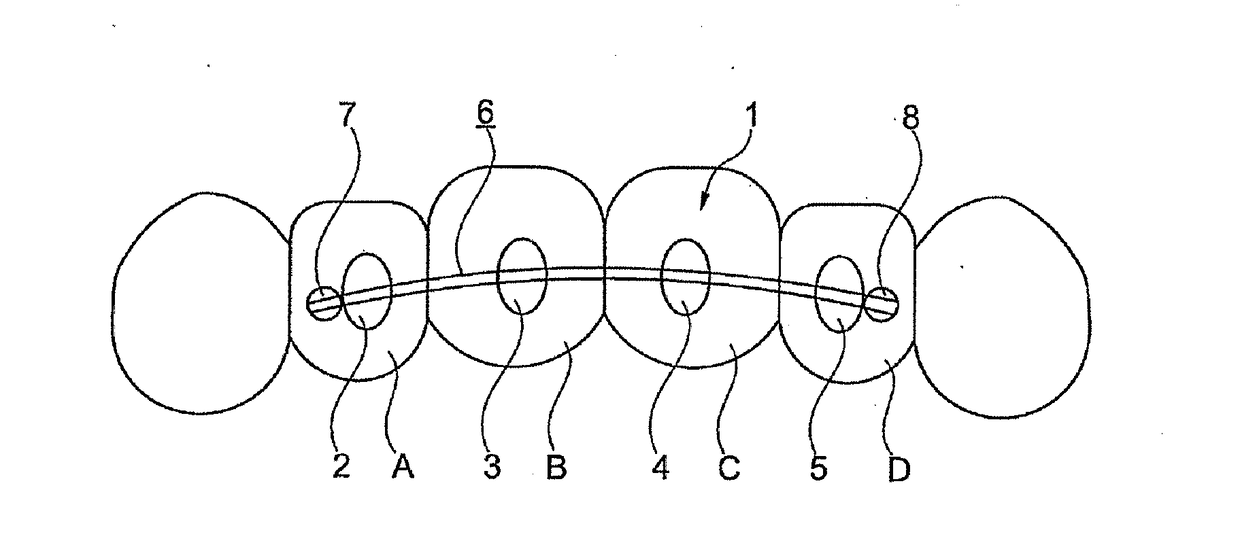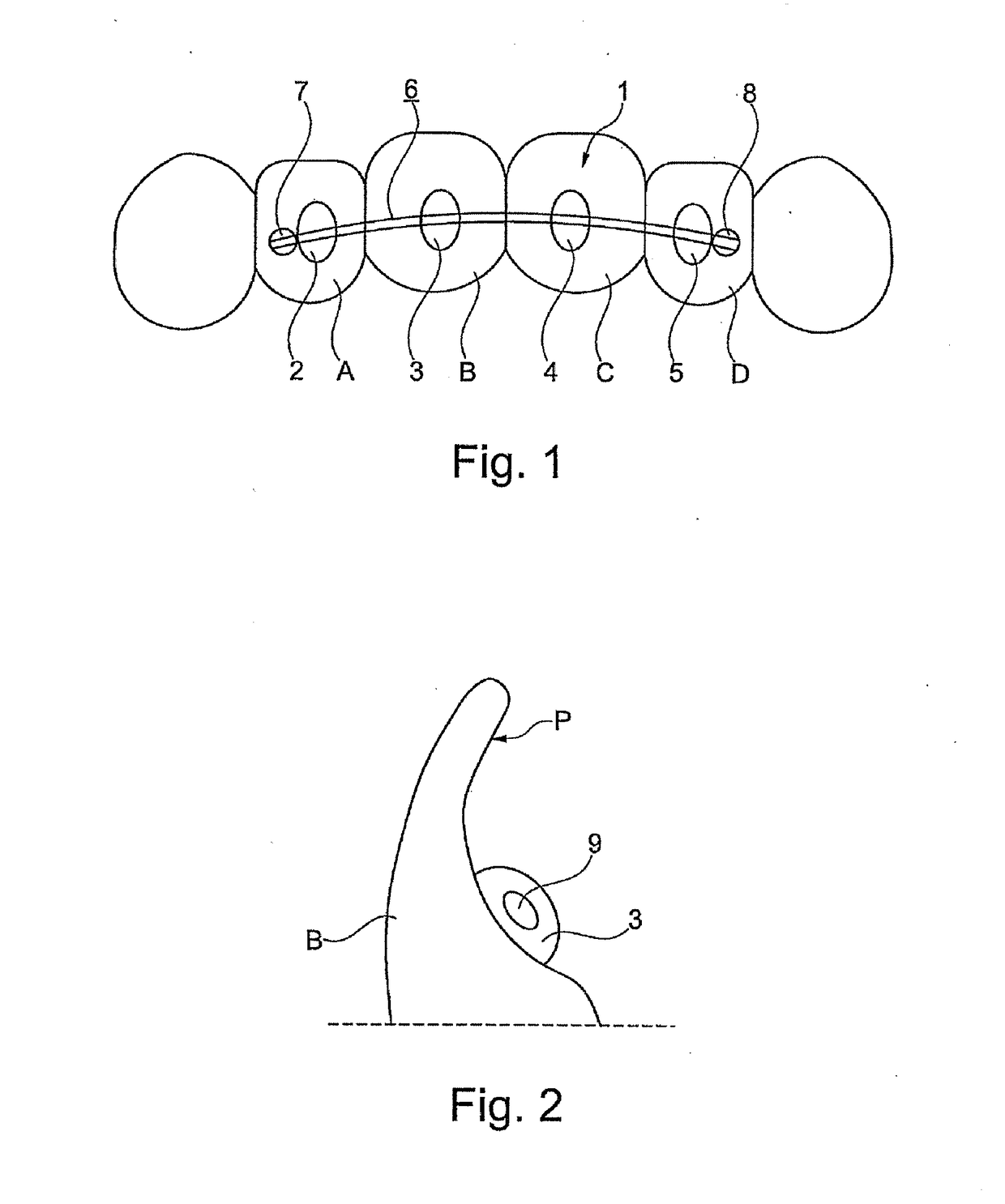Retainer
a technology of teeth and splints, applied in the field of teeth splints, can solve the problems of preventing this mobility and absolutely restricting the movement ability of teeth
- Summary
- Abstract
- Description
- Claims
- Application Information
AI Technical Summary
Benefits of technology
Problems solved by technology
Method used
Image
Examples
Embodiment Construction
[0038]FIG. 1 shows a retainer 1 having connection pieces 2, 3, 4, 5. A connection wire 6 is passed through the connection pieces 2 to 5 and movably mounted. At the two ends of the connection wire 6, there are end stops 7, 8 in each case. The connection pieces themselves are attached in the palatal region to teeth a, b, c, d. The wire 6 is a PEEK wire. End stops in the form of beads or swellings 7, 8 are attached at the ends of the wire 6. There are fundamentally two options, specifically allowing the stops 7, 8 to interact with the particular composite material of the corresponding connection piece 2, 5 to form a permanent connection, or else maintaining a mobility of the wire 6, meaning that the tooth can only move up to the stop. Tooth A could, in FIG. 1, for example, move further to the left unless tooth D, in particular, can exert no movement whatsoever to the left.
[0039]When tooth B lies on stop 8 via the connection piece 5, the free movement of tooth A to the left is absolutel...
PUM
 Login to View More
Login to View More Abstract
Description
Claims
Application Information
 Login to View More
Login to View More - R&D
- Intellectual Property
- Life Sciences
- Materials
- Tech Scout
- Unparalleled Data Quality
- Higher Quality Content
- 60% Fewer Hallucinations
Browse by: Latest US Patents, China's latest patents, Technical Efficacy Thesaurus, Application Domain, Technology Topic, Popular Technical Reports.
© 2025 PatSnap. All rights reserved.Legal|Privacy policy|Modern Slavery Act Transparency Statement|Sitemap|About US| Contact US: help@patsnap.com


